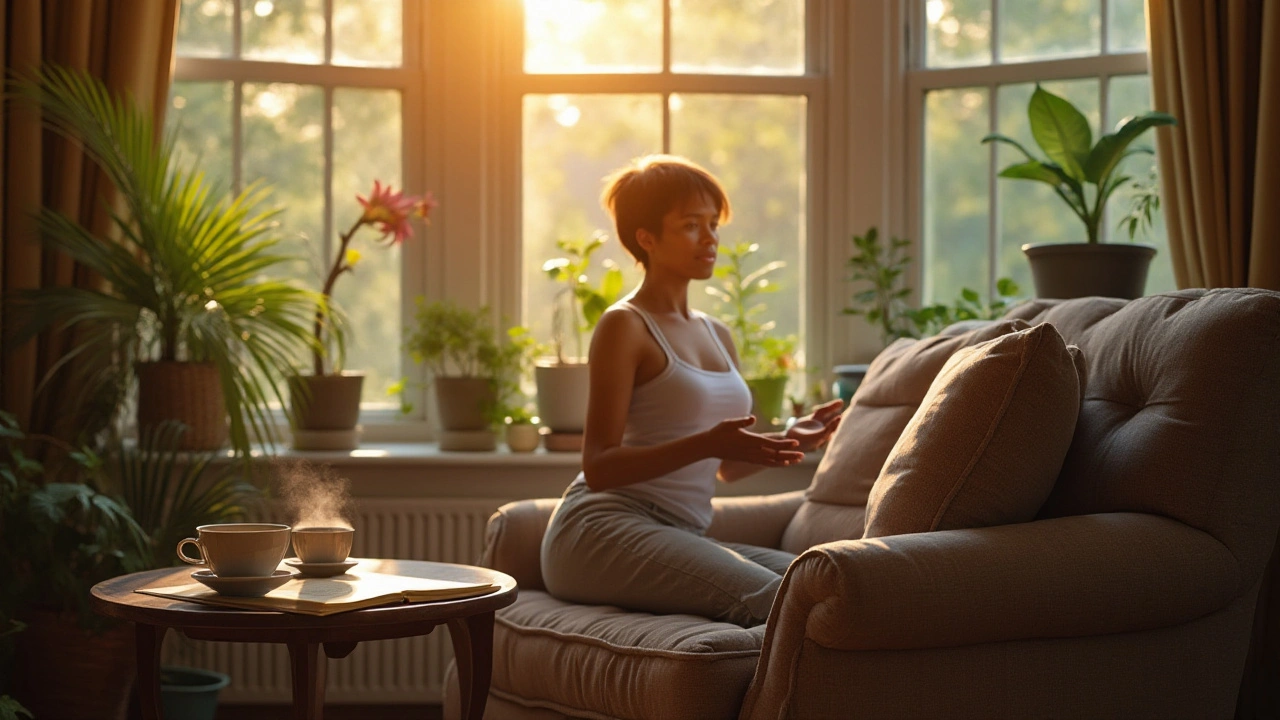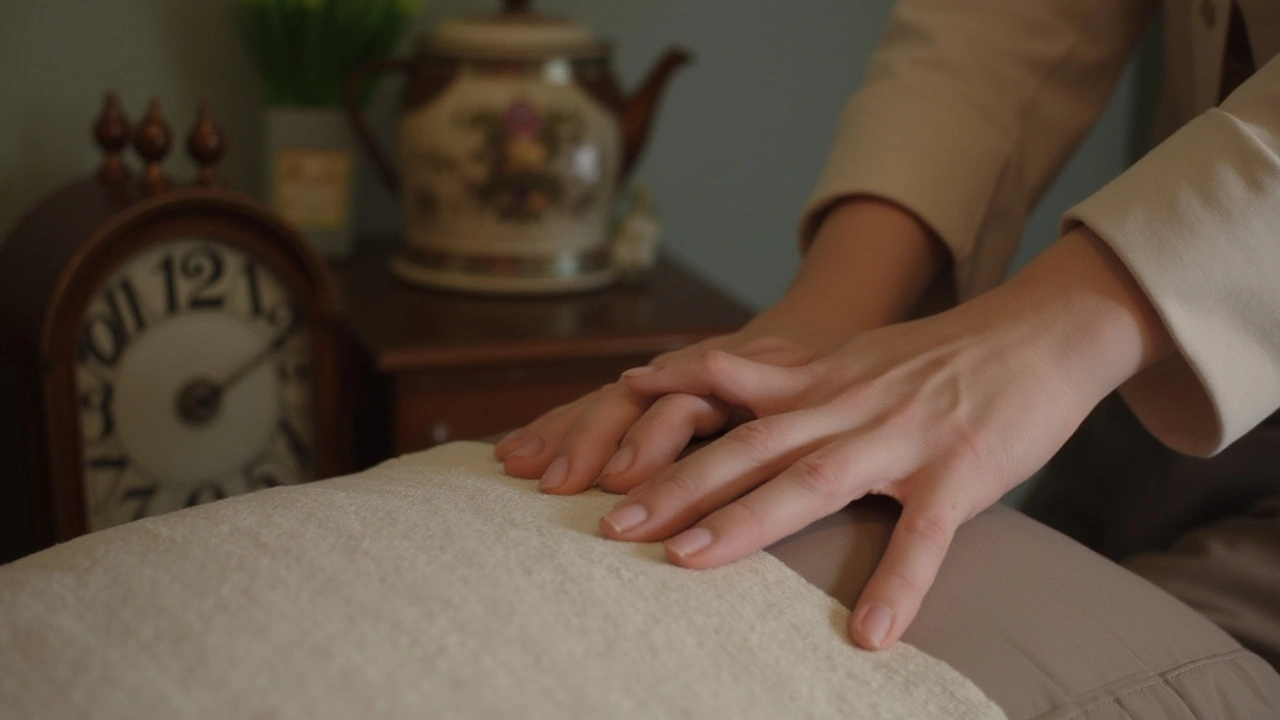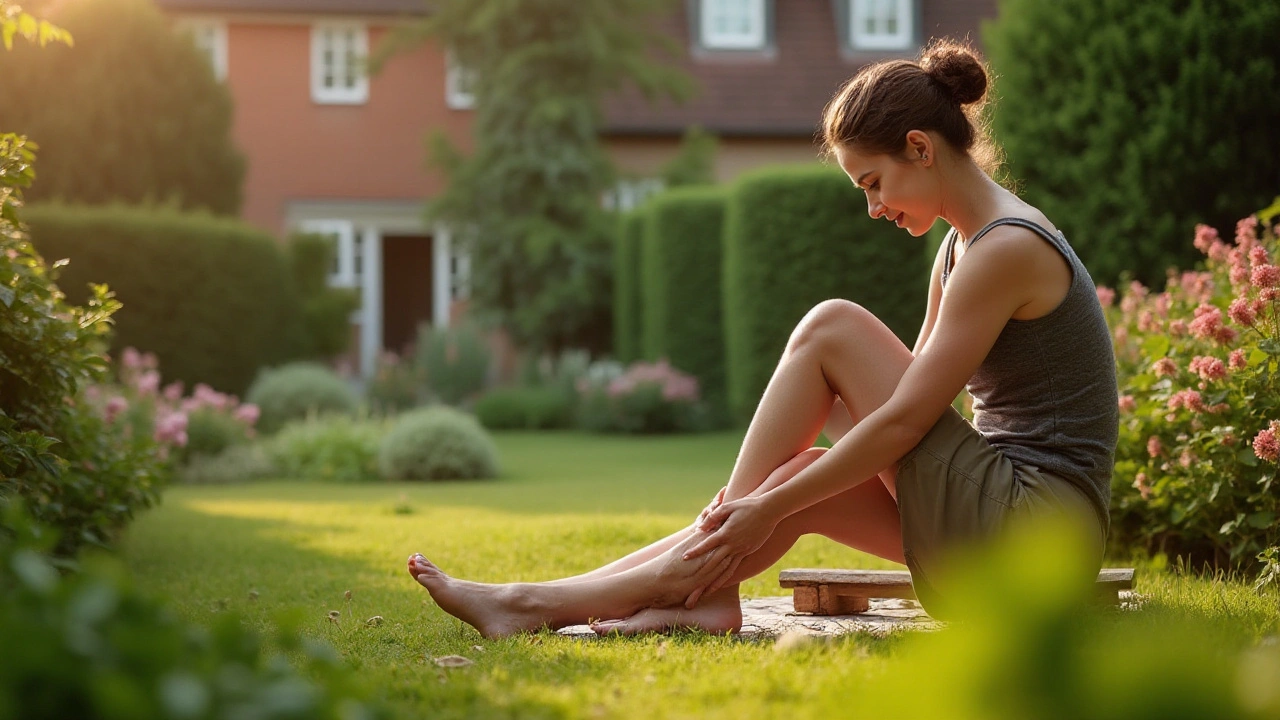Unlocking Health with Acupressure Techniques

Acupressure, an ancient healing art rooted in traditional Chinese medicine, remains a trusted method for achieving balance and health in the modern world. This practice involves applying pressure to specific points on the body, known as acupoints, to stimulate energy flow and promote healing.
The beauty of acupressure lies in its simplicity and accessibility - anyone can learn basic techniques to alleviate common ailments and improve well-being. With a few practical insights and gentle guidance, you too can harness this natural therapy for yourself or loved ones.
Journey with us as we explore how acupressure can effectively support physical health and emotional resilience, offering a natural path to vitality in a fast-paced world.
- Introduction to Acupressure
- How Acupressure Works
- Health Benefits of Acupressure
- Practical Tips for Home Practice
Introduction to Acupressure
Acupressure, a time-honored practice deeply rooted in the traditions of Chinese medicine, presents a natural, non-invasive way to address both physical and emotional distress. This ancient technique is akin to acupuncture but differs as it foregoes needles, instead relying on the firm pressure of fingers and palms to harness the body's own healing capabilities. The concept behind acupressure is based on the belief that energy, or 'Qi' (pronounced 'chee'), flows through meridians in our body. By applying pressure to specific acupoints along these meridians, the balance of energy is restored, promoting health and alleviating a variety of ailments.
Practitioners and enthusiasts often tout acupressure as a valuable addition to self-care routines, not only for those with chronic conditions but also for individuals seeking general wellness. It's a method that many find complements conventional medical treatments wonderfully, offering relief from headaches, insomnia, anxiety, and nausea, just to name a few. Acupressure's appeal stretches beyond its therapeutic uses; there's a sense of empowerment in applying these techniques oneself, allowing a personalized touch to the healing process.
According to Dr. Michael Reed Gach, the author of Acupressure's Potent Points, "Acupressure releases tension, increases circulation, reduces pain, and develops spirituality and vibrant health." This technique not only taps into the body's innate ability to heal but also fosters a deeper connection between mind and body.
The origins of acupressure can be traced back over 5,000 years, with historical evidence suggesting its use as a primary healing tool in ancient China. As this practice spread across different cultures and continents, variations emerged, each incorporating local healing philosophies and methods. Today, it continues to evolve, integrating with other therapeutic modalities, providing a comprehensive approach to well-being. Whether you're new to this healing art or revisiting its virtues, understanding acupressure affords a deeper appreciation for its role in holistic health.
The global embrace of acupressure can also be attributed to its relative ease of use compared to its needle-bearing counterpart, acupuncture. Beginners are encouraged to learn basic pressure point locations and techniques, which can be mastered with minimal guidance. However, it is always wise for novices to consult with a skilled practitioner initially, ensuring the application is suitable for specific conditions or concerns. As part of this journey into natural healing, one can feel empowered knowing they possess the tools to enact change in their own health and well-being.

How Acupressure Works
Acupressure operates on the foundational principles of traditional Chinese medicine, which holds that the body contains an energy flow called 'Qi' or 'Chi.' This energy courses through pathways known as meridians, forming a complex network that powers the body and maintains harmony. When these pathways encounter blockages or imbalances, illness and discomfort arise. Acupressure aims to restore balance by targeting specific points along these meridians, known as acupoints. By applying precise pressure to these points, practitioners can alleviate symptoms and unlock natural healing processes.
Each meridian is associated with specific organs and systems in the body, and the corresponding acupoints are meticulously located. The practice requires a blend of intuition and anatomical knowledge to appropriately identify and stimulate the right spots. With careful technique, practitioners can stimulate the immune system, enhance circulation, reduce tension, and even influence the function of internal organs. An interesting fact is the Pericardium meridian, often targeted to relieve anxiety and heart palpitations, due to its connection with the heart.
The Science Behind the Technique
Although rooted in ancient practices, modern science has begun to recognize how acupressure works at a biological level. Some studies suggest that stimulating acupoints can increase neurotransmitter release, such as serotonin and endorphins, offering pain relief and mood enhancement. The pressure applied during acupressure sessions might also trigger the body's parasympathetic response, promoting relaxation and reducing stress levels. Notably, the "Gate Control Theory of Pain" proposes that nerve fibers can block pain signals to the brain when an external stimulus is provided at certain points.According to Dr. B. Joyce from the National Integrated Medicine Research Center, "Acupressure's efficacy can often be ascribed to its ability to mobilize catecholamines and endorphins, substances that naturally moderate our pain threshold."
Although skeptics remain, ongoing research continues to validate acupressure's physiological effects. It is frequently used in conjunction with acupuncture, both aiming to balance the body's energy to facilitate healing. Using fingers, palms, elbows, or even tools, acupressure can be tailored to individual needs, making it a versatile choice for self-care. However, the effectiveness of each session can be influenced by factors such as patient condition, technique accuracy, and environmental tranquility.

Health Benefits of Acupressure
Many people turn to acupressure as a trusted practice for improving physical and emotional wellbeing. This technique, deeply rooted in traditional Chinese medicine, offers a multitude of health benefits by harnessing the body’s natural ability to heal itself. One of the most significant advantages is pain relief. Many individuals have experienced relief from chronic pain conditions, such as headaches, neck pain, and lower back aches, through regular application of acupressure. By stimulating specific points associated with pain pathways, acupressure can decrease stress hormones and increase comfort.
Another compelling reason to explore acupressure is its profound impact on stress and anxiety. Compounded by daily pressures and modern lifestyle, stress often manifests physically through tension and discomfort. Acupressure provides a non-invasive way to alleviate this. Studies have shown that applying pressure to certain acupoints can result in a sense of calm, promoting both mental relaxation and enhanced sleep quality. Sleep, as we know, is crucial for the body to rejuvenate, making this benefit particularly valuable for those struggling with insomnia or irregular sleep patterns.
Natural healing enthusiasts often praise acupressure for its holistic qualities. Unlike some conventional treatments which might focus solely on symptoms, acupressure targets the root cause by restoring energy balance within the body. This has been particularly beneficial for those with digestive disorders or immune system deficiencies. By stimulating key points, acupressure can enhance circulation, promote lymphatic drainage, and improve organ function, leading to better digestion and a strengthened immune response.
“Acupressure has become a cornerstone of complementary health approaches due to its profound ability to trigger the body’s healing properties,” remarks Dr. Lisa Galper, a respected practitioner in the field.
The empowerment that comes from learning how to perform acupressure on oneself is another benefit. This practice allows people to take their health into their own hands, literally. Once individuals learn this technique, they can apply it anywhere and at any time, making it a convenient, cost-effective treatment that does not require special equipment or preparations. The simple act of pressing on specific body points can bring relief and balance, making it accessible for everyone, from busy professionals to seniors. While the learning curve may appear steep initially, with practice, the results become evident.

Practical Tips for Home Practice
Diving into the world of acupressure at home can be both an empowering and educational experience. Start by familiarizing yourself with the most common acupoints, each carrying unique benefits. Some of the most recognized points include the LI4 or the Hegu point, located between the thumb and forefinger, known for its ability to relieve headaches and stress. Another valuable point is the SP6 or Sanyinjiao, revered in traditional Chinese medicine for supporting digestion and easing menstrual discomfort. Acquainting yourself with these points can lead to a more effective practice.
Before engaging in self-practice, ensure you are in a comfortable and quiet environment to allow for full relaxation. Acupressure is not only about the physical touch but also about mental calmness. Sit or lie down in a relaxed position, close your eyes, and take deep breaths to center your mind. Using your fingers or thumbs, apply gradual pressure on the chosen acupoint. It's essential to maintain a firm yet gentle touch to stimulate the point without causing discomfort or pain. Hold the pressure for about 1 to 3 minutes while breathing mindfully, visualizing the energy flow as you perform this technique.
Identifying Acupoints
Learning to locate acupoints precisely is crucial for effectiveness. You might find diagrams helpful, or consider a beginner's guidebook to visualize where to apply pressure accurately. Often, these acupoints are located where muscles are tense or sensitive, so patience and practice are your allies. Many practitioners suggest using a gradual trial-and-error approach to find the exact spot that yields the best results. A systematic method involves working through a checklist of your body's acupoints and noting sensations as you apply different levels of pressure. Consistency is key—regular practice over time can enhance your sensitivity and ability to identify these vital points swiftly.
Common Practices and Routines
"Acupressure, when performed consistently, acts as a gentle reminder to the body to return to its state of balance," says Dr. Tara Schmidt, an expert in holistic therapies.
Integrating acupressure into your daily routine isn't difficult. Start by dedicating just a few minutes each day, perhaps during your morning quiet time or as part of your evening wind-down ritual. Many find that incorporating acupressure with other relaxation techniques like meditation or deep breathing exercises enhances the overall experience. Set a dedicated time each day—like at sunset or after a refreshing morning shower—to focus on these practices. Such routines reinforce the habit, encouraging both physical and mental preparation for optimal benefits.
Consider trying a simple acupressure session on your feet before bedtime to promote restful sleep. The KD1 point on the foot’s sole is particularly effective for calming the mind and reducing insomnia, promoting healthful and undisturbed sleep patterns. Proper application is vital; utilize varying degrees of pressure, adjusting based on your comfort and the point's sensitivity. Establish benchmarks and goals by documenting your progress—this can be incredibly motivating for those seeking measurable success in their natural healing journey.
To track your progress, maintain a small journal where you record your experiences and any noticeable changes in health or mood after each session. Reflective journaling can be quite insightful, revealing which routines yield the best results and how acupressure impacts your everyday well-being. This can also serve as motivation and a helpful guide should you decide to explore advanced techniques or share your experiences with others interested in holistic therapy.





